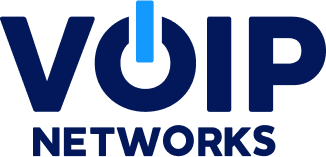In broad terms, there are two basic ways to build a communications solution through Infrastructure as a Service (IaaS), where computing services are supplied by a cloud services provider: work with a turnkey provider or piece together an infrastructure using multiple vendors.
The Do-It-Yourself (DIY) Strategy
Companies that use a Mitel solution can start with a list of traditional IaaS partners:
- MS Azure
- Google Cloud Services
- Amazon Web Services
- iLand (now 11:11)
These companies provide two primary services:
- Data centers (in the cloud)
- Virtual servers for applications
Users pay for the server space they need; within limits, IaaS partners don’t care whether the server space is filled with Unified Communication (UC) software or other applications.
Organizations can manage servers, applications, and other aspects of their communications infrastructure in-house or contract with other vendors to provide the remainder of an end-to-end communications system. Support will generally only include assistance with server-related issues. An IaaS provider won’t typically support the applications users install, except in limited circumstances.
Users will then have to contract with up to four additional vendors:
1. Billing Service (to bill your customer on a scheduled monthly basis)
2. Tax Service (to calculate taxes and regulatory fees and to remit such taxes and regulatory fees to the thousands of applicable agencies)
3. Carrier Services (to provide all Local/Long-distance/International services)
4. 911 Service provider (such as Intrado or RedSky)
Thousands of federal, state, municipal, and county agencies legally require that UC systems include certain services, and the list of compliance and other fees that users must remit goes on and on.
The penalties for not meeting the requirements can be severe. Emergency responders must be able to pinpoint a caller’s location during 911 calls as part of Ray Baum’s Act, and fines for non-compliance are $10,000 plus $500/day. Kari’s Law, which requires that callers can dial 911 directly without dialing any other numbers, carries identical fines.
One other issue: When services are provided by multiple vendors, it can be time-consuming to find the source when an issue occurs. It’s easy for vendors to point fingers at each other, which only makes it more difficult to find solutions when something isn’t working correctly.
Cloud9 Infrastructure: A Turnkey Approach
An end-to-end service such as Cloud9 Infrastructure bundles everything needed for a robust communication system that manages all regulatory requirements and fees and offers a single point of contact. Typically, that bundle of services will also include additional capabilities.
Cloud9 Infrastructure, for example, provides white-glove service and U.S.-based support, and includes services such as STIR/SHAKEN, technology that can identify and mitigate robocalls, spam calls, and calls that spoof (mimic) legitimate phone numbers (often used by scammers and robocallers).
For more information on the benefits of using a single partner for your communications system, including how Cloud9 Infrastructure’s technical experts can help integrate your communications with other operations (such as CRMs), please contact Cloud9 Infrastructure at 800.947.0007 or sales@cloud9infrastructure.com.
Mitel PowerUp News (Product Portfolio Updates)
How To Choose The Right Infrastructure Provider
Channel partners have several options when choosing the right Infrastructure as a Service (IaaS) provider. Learn what to look for when evaluating IaaS solutions.






